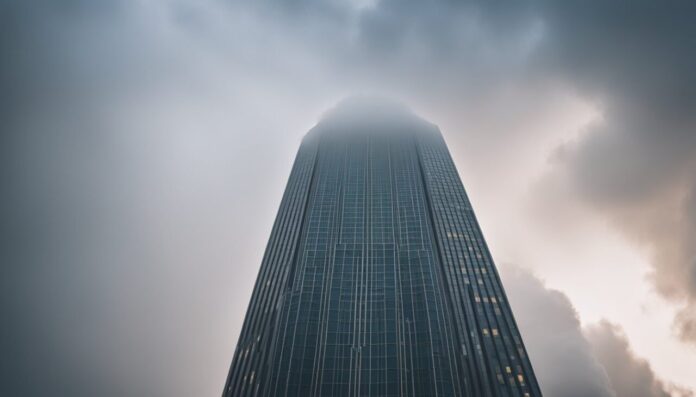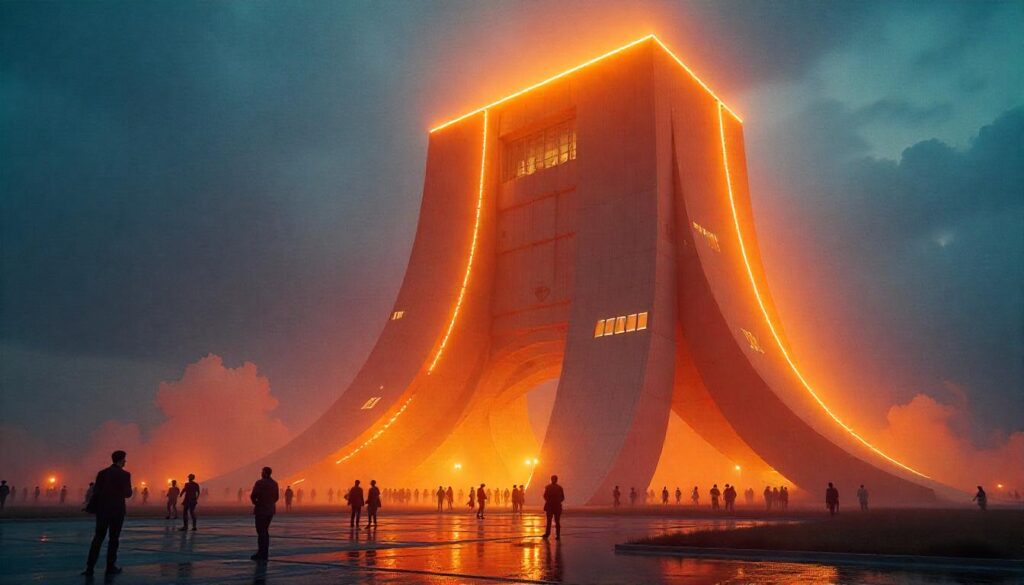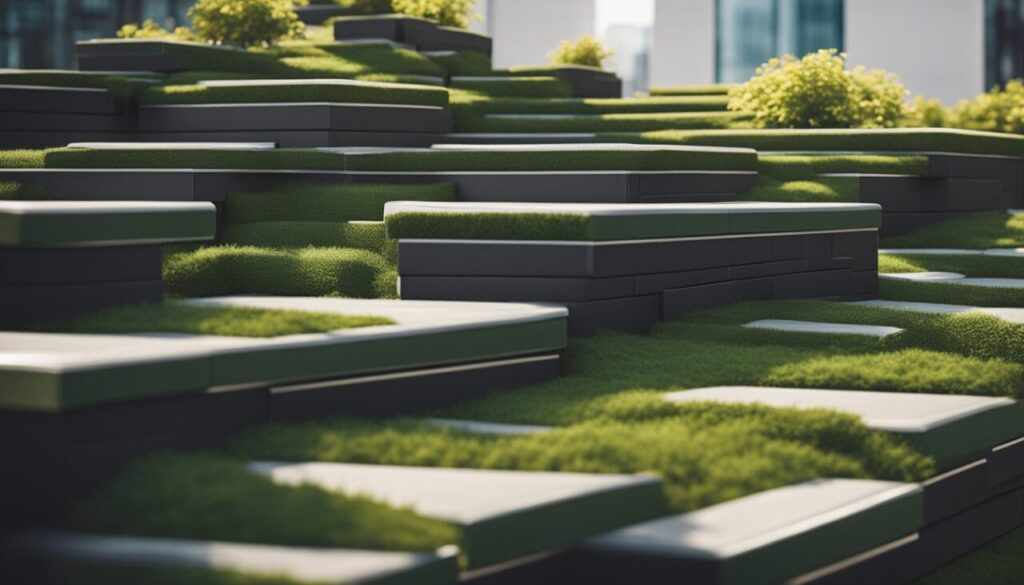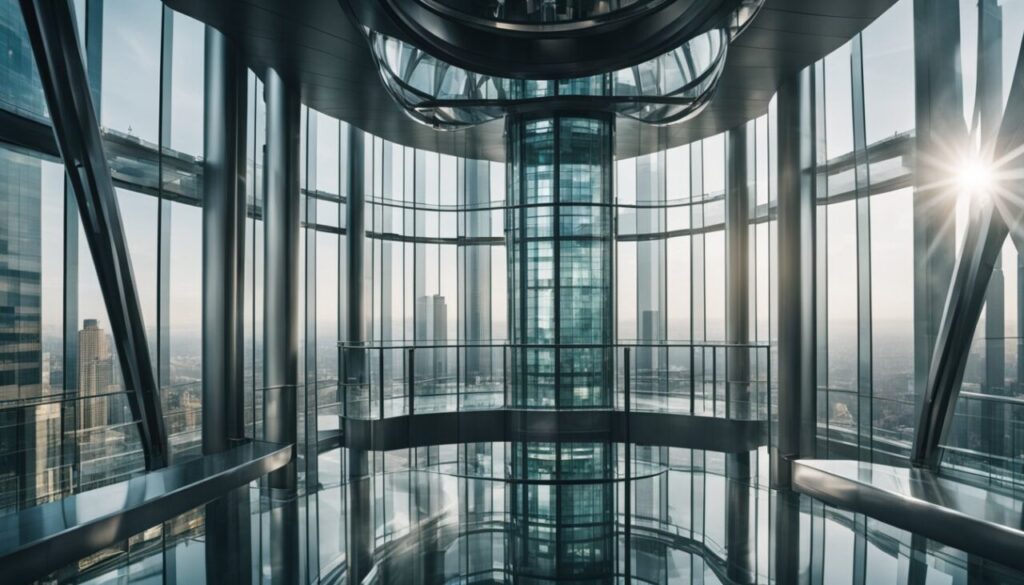
Think about this for a second—what if every single person on Earth lived inside one building?
That really sounds like a strange sci-fi scenario, but it’s fun to stretch the imagination sometimes.
Currently, the world population is over 8 billion so housing all of us under one roof would be a logistical nightmare, but let’s play around with the idea.
It’s a mind-bending scenario that forces us to think about logistics, engineering, and even some weird side effects. But let’s run with it.
We’ll use math to estimate the size of this mega-structure, how much steel and concrete we’d need, and what kind of strange realities we’d face.
So, let’s begin.
Let’s start building (or deconstructing) this mega structure.
How Much Concrete and Steel Would We Need?

To even start constructing this monstrous building, the quantities of materials involved would be staggering. Skyscrapers today are made of steel and concrete, so let’s do some math.
For the world’s tallest building, the Burj Khalifa, engineers used approximately 330,000 cubic meters of concrete and 39,000 tons of steel. The Burj Khalifa is 830 meters tall and has 160 floors.
If we scale this up to our imagined building, which would be 800 kilometers tall (more on that number in the following chapters) and have roughly 80,000 floors (yes, 80,000!), the materials needed would increase exponentially.
Concrete Calculations:
If the Burj Khalifa needs 330,000 cubic meters of concrete for 830 meters, then for a building 800 kilometers tall, the calculation would look like this:

This amount of concrete is more than 960 times what was needed for the Burj Khalifa.
To put that in perspective, it’s about 130 times the volume of the Great Pyramid of Giza!
Steel Calculations:
For steel, a similar scaling gives us the following:

That’s nearly 38 million tons of steel, which is about the annual production of the entire United States!
Interesting fact: To transport this much material, we would need to move mountains—literally. The total weight of concrete and steel combined would weigh more than all the world's aircraft carriers put together.
How Many Square Meters or Feet?

Right now, the average living space per person globally is about 42 square meters (roughly 452 square feet).
This varies a lot between countries.
For simplicity, let’s give each person 50 square meters of living space. Multiply that by 8 billion people, and you’re looking at 400 billion square meters of living space.
That’s just living quarters. We haven’t considered schools, offices, hospitals, parks, or anything else.
To keep things simple, let’s say every person also needs another 50 square meters of communal space.
That brings us to 800 billion square meters.
Nice, big number huh?
Turning Space Into Height

We already did some calculations about the heights but let’s go into more details.
Sure, we could opt for a wide, flat structure the size of an entire country.
But that’s kind of boring. Let’s think vertically.
If each floor of this building were 10 meters high (about 3 stories in most modern buildings), we could divide our total space by floor area to figure out how many floors we need.
If the building has the base area of a typical large city—let’s say around 1,000 square kilometers (that’s slightly smaller than Los Angeles)—we would end up with a building 800 kilometers tall.
For context, Mount Everest is 8.8 kilometers tall, and planes fly at about 10 kilometers high.
So, yeah—800 kilometers is high enough to literally punch through the atmosphere and touch space.
Interesting fact: If this building existed, the top floors would be in a near-zero-gravity environment due to the altitude, making those floors feel more like a space station!
What Would Life Be Like in This Building?

You’d think putting everyone in one place would lead to chaos. But on the contrary, it might actually make things super efficient (but also dystopian).
No more long commutes, for example. If you live, work, and play in one place, there’s no reason to waste time stuck in traffic. Elevators could take you anywhere you need to go.
But there’s another side to it. Stuffing 8 billion people together could lead to a feeling of claustrophobia.
Even with a big living space, privacy would be a thing of the past. You could have parks on every 100th floor, shopping malls scattered throughout, and entertainment centers that stretch for miles—but there’s no escaping the fact that you’re always surrounded by people.
Interesting fact: In such a dense living situation, things like farming might happen inside the building using vertical gardens, hydroponic farms, and artificial light. We might even stop thinking about weather, as the climate inside the building would be fully controlled.
What Would the Neighborhoods Look Like?

You could design neighborhoods within this mega-skyscraper. Different sections could have distinct styles—imagine one floor designed to look like Tokyo, another mimicking Paris, another like New York City.
Maybe you’d get assigned to a “neighborhood” based on your interests or profession.
Lawyers on floor 320, artists on floor 215, athletes on floor 165. It would be like Hogwarts houses but with no magic.
Or maybe there would be random assignments, forcing people of different backgrounds to interact.
Interesting fact: The concept of local government could shift dramatically. Every floor might have its own mini-mayor, creating a network of tiny autonomous regions. It’d be like running 100,000 cities, all in one vertical stack!
What About Waste and Resources?

Now, let’s talk about the mess. All those people produce waste. A lot of waste. Water, garbage, sewage—it would pile up quickly if not managed properly.
This building would need the most advanced recycling and waste management systems ever conceived. Maybe all organic waste could be composted into fertilizer for the vertical farms, while non-organic waste gets turned into energy somehow.
Water would be another big challenge. A system of pipes would have to snake its way through the entire structure, constantly filtering and recycling water.
Imagine the strain on the building’s infrastructure if something went wrong with the plumbing on floor 700.
Then there’s energy. It’s possible that a building of this size could have its own power plant—probably hundreds of them.
Maybe nuclear power, or maybe something like geothermal energy if the building were deep enough into the Earth.
Interesting fact: The building might have wind turbines and solar panels installed on the outer layers. But floors that reach into space would likely need nuclear energy, as solar power becomes less effective the farther you go.
Strange Scenarios: What Happens When the Elevator Breaks?

We’ve all had the experience of being stuck in an elevator for a few minutes. Now imagine you live on the 345th floor of a building with 800 kilometers of height, and the elevator breaks.
Walking down 345 flights of stairs isn’t an option.
These elevators would need to be something beyond what we have today. Maybe a network of bullet-train-like elevators, moving at incredible speeds.
But even those systems could malfunction. If that happened, entire sections of the building could become isolated, like a futuristic version of cities cut off from the world during medieval times.
Interesting fact: In this giant building, helicopter drones might be the solution to a broken elevator. You could have personal flying drones to zip you around when technology fails.
How Would People Breathe on the Highest Floors?

As the building stretches higher and higher into the sky, air pressure becomes a serious problem. At altitudes above 12 kilometers, breathing becomes nearly impossible without supplemental oxygen.
In our scenario, the top floors of the building would be 800 kilometers up, way beyond the breathable atmosphere!
The air at that altitude would be thinner than anything humans have ever experienced. So how would we keep everyone from suffocating?
Artificial Atmosphere

You would need a pressurized environment, similar to what astronauts use on the International Space Station. Special oxygen systems would have to pump breathable air to these upper floors, with massive airlocks sealing off sections of the building to maintain pressure.
The higher you go, the more like space travel life would become.
But pressurizing the building at that scale is a feat no one has even attempted.
The structure might need to be designed with chambers and compartments to regulate pressure gradually, so the people living on floor 70,000 don’t suddenly black out.
Interesting fact: Because gravity is weaker at higher altitudes, people living on the top floors might experience lower bone density and muscle mass, like astronauts who stay in space too long!
What About Earthquakes?

Here’s another fun question: What happens during an earthquake? Skyscrapers today are designed to sway slightly in the wind or during seismic activity.
But what about a building that is 800 kilometers tall?
The sway on the top floors could be enormous. People living in the upper sections might feel like they’re on a ship in stormy seas, with the building swaying back and forth by several hundred meters.
This could cause huge motion sickness, disorientation, and everything bad you can imagine.
Earthquake Dampening Systems

To counteract this, engineers would need to design special earthquake dampening systems. One possibility is a series of massive counterweights that move in the opposite direction of the earthquake’s forces.
These counterweights could be larger than some entire skyscrapers, suspended on cables throughout the building.
Still, there would always be the danger of sections of the building collapsing.
A chain reaction like this could lead to the collapse of entire floors, potentially causing chaos as residents evacuate through escape chutes or emergency pods.
Interesting fact: The building would need to be anchored to bedrock or even deeper—possibly digging miles into the Earth’s crust. An earthquake could still cause the lower sections of the building to buckle under pressure.
Could This Actually Happen?

Well, no—not any time soon, at least. There’s no material currently in existence that could support the weight of such a building.
Skyscrapers, while impressive, are limited by the strength of the materials we have available, mainly steel and concrete.
But let’s entertain the thought that one day we might invent some super-material that could handle the weight and the stress.
A building like this would require decades of planning and construction.
The resources needed would be astronomical, and it might even cause international conflicts over who gets to live where.
Who would get the top floors near space? Who would have to settle for the lower levels close to Earth?
Overall, while this is an interesting thought experiment, it will never become a reality.
Why?
Well, because there’s simply no need for it. Even if the human population were to multiply by 1,000 times in the next million years, wider (not taller) buildings would still be the better choice to accommodate, say, a trillion people.



























